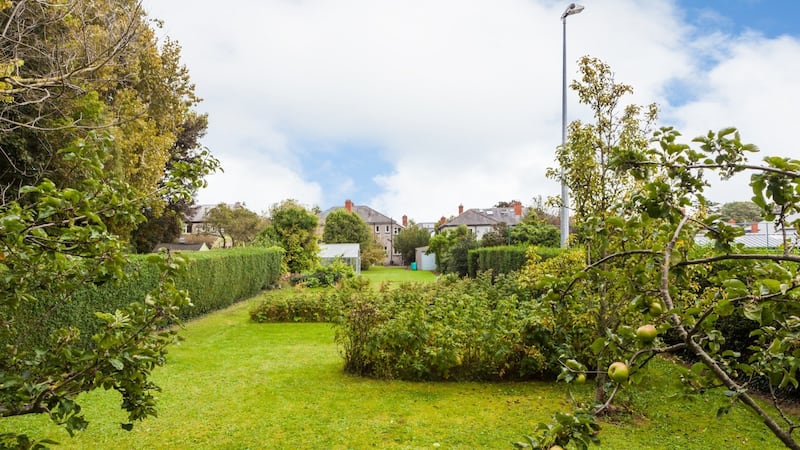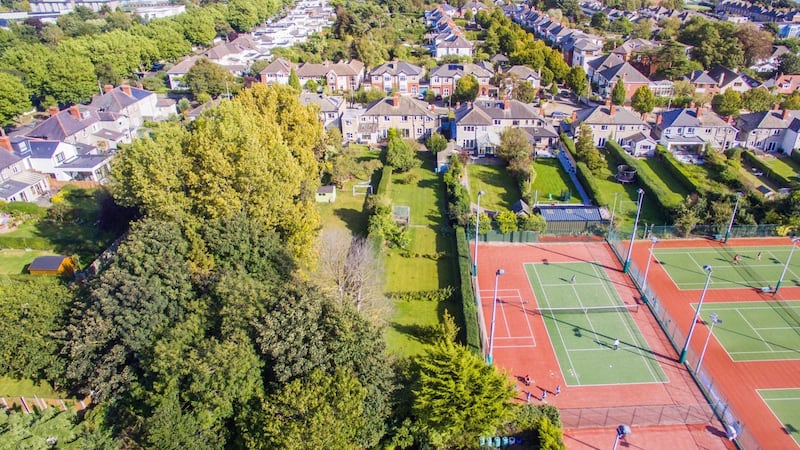Lisney in Clontarf, Dublin, is bringing a fine 1930s redbrick and render house to the market where the focus is its development potential to the rear.
Seeking in excess of €995,000, the semi-detached house with five bedrooms – four upstairs, one downstairs – is set on about 0.3 of an acre. Two of the bedrooms upstairs are singles and the main bedroom is en suite. There is also a detached garage to the rear. The plot is 13m (43ft) wide.
But it is the 80m-long (262ft), west-facing garden that is the real feature here, and the potential to build on it, something the neighbours have already done. Through Clontarf-based Mara Architects, Number 36 has got planning for two houses in its back garden and for the extension and refurbishment of the existing house.

The existing property, House A, which currently measures about 128sq m (1,378sq ft), will retain a garden of 65sq m (700sq ft). The two homes to the rear, House B (144sq m with a garden of 102sq m) and House C (142sq m with a 122sq m garden), will be accessed via a new laneway to the side of the house that will be 5.5m wide and includes a footpath.
“The precedent set by An Bord Pleanála in granting permission for two additional houses to the rear of Number 36 is a big plus for the sale of Number 30,” says Ross Shorten, a director at Lisney’s development and advisory section.
The principal difference at Number 30, a 130sq m (1,400sq ft) property, is that it abuts Clontarf Tennis Club, an organisation that has doubled in size in the past 30 years by buying such back gardens from neighbours on the road.
Hurdles
Getting planning is one hurdle but so too is figuring out the cost of building. Seamus Harrington, who specialises in high-end renovations through his company SHCL, says that to double the size of the existing home would cost in the region of €500,000. Given the restricted access to the rear, its suburban setting and the increased costs of materials, he advises would-be buyers to factor in a sliding scale of between €2,800 and €3,500 per sq m for any new construction to the rear. This gives an average build cost of about €450,000 per property.
Getting construction staff is another issue, he says. “The skilled workforce is not available. Every time a data centre goes on site it pulls 1,500 skilled staff from an already-squeezed labour force.” Large-scale development presents the same problem.

Work is needed to the original house at Number 30 to accommodate a driveway to the rear, says Catherine Mara of Mara Architects. But she expects there to be plenty of interest in the property. “There is a lot of demand from families looking to provide next-generation homes to their kids on so-called locked sites.” She says if the services are there and if the site is of a size to develop and you factor in overlooking, noise, overshadowing and good design, Dublin City Council can be very supportive. This compound living is already a growing trend at the upper end of the international market.
We can expect to see more backyard development, but it may be that the back garden itself is the most valuable part of the property, says Harrington. “If Covid has taught us anything, it’s that the value of Number 30 is its west-facing garden and all that green space.”
The location is about two blocks from the seafront and the cafes and restaurants of Vernon Avenue where you also have access to Nolan’s, one of the capital’s best family grocers. It is also a close to the seafront – one of the city’s best open spaces and near Clontarf pier where a lot of sea swimmers take their dip.
See mara.ie









